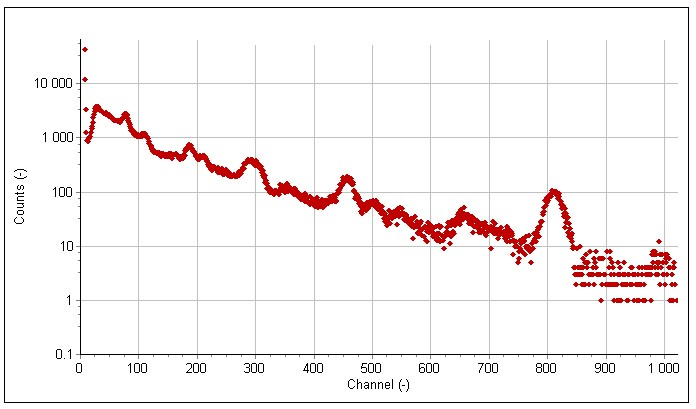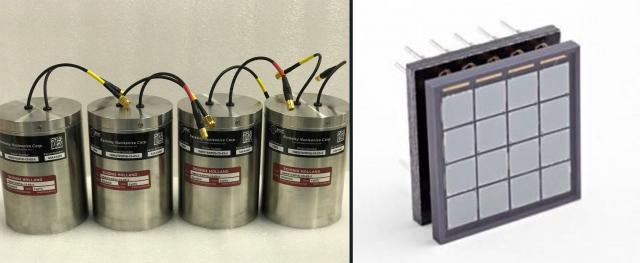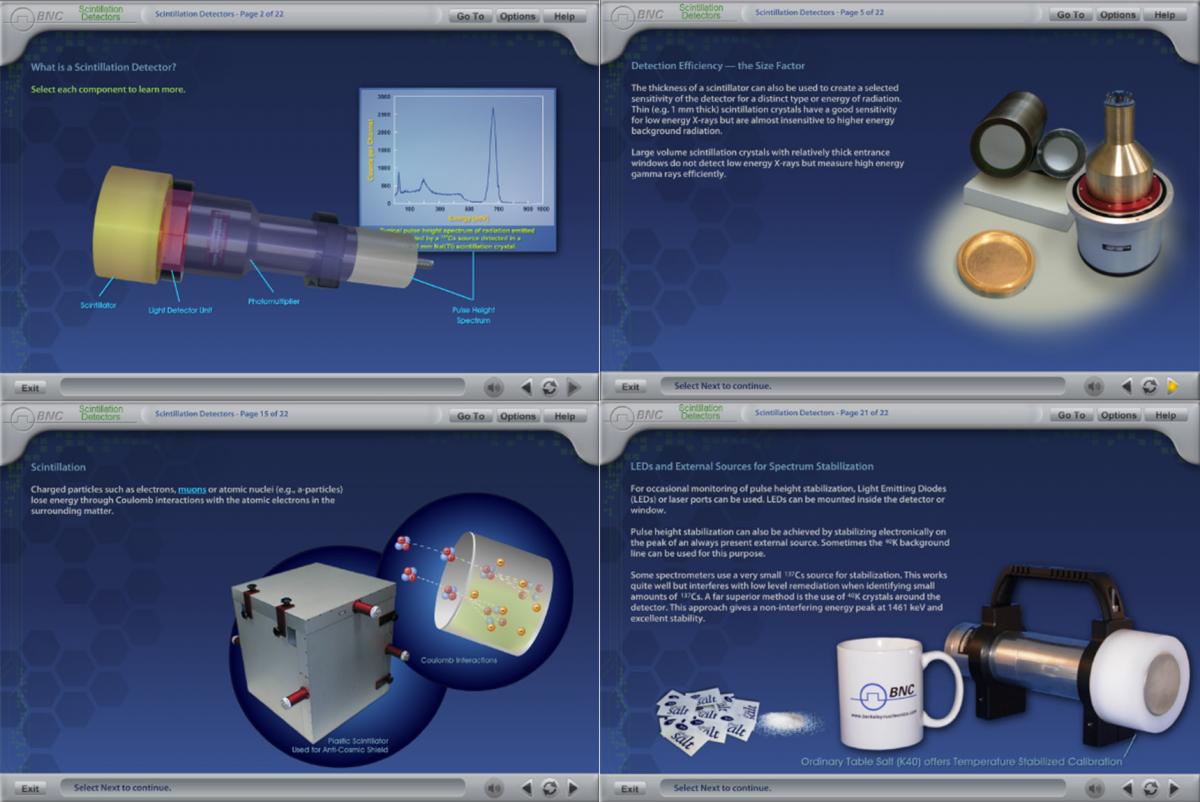Silicon Photomultipliers (SiPMs) offer an alternative to the traditional readout of scintillators with photomultiplier tubes (PMTs). SiPMs are mechanically compact, can be operated at low voltages, and are impervious to magnetic fields. The energy resolution possible with SiPMs is in some instances comparable to that achieved by PMTs. This value is in practice determined by the type of scintillator employed, its dimensions, and the surface area covered by the SiPM array. A broad range of SiPM equipped detectors has been developed for a varying number of applications and are available from BNC. These designs range from miniaturized sensors for low payload UAV applications to large volume assemblies (e.g. 2x4x16) for field gamma spectroscopy operations.
Contact BNC for more information or to discuss your application. You can also tell us about your requirements by completing our brief detector Survey.
Overview
Silicon Photomultipliers are made up of arrays of micron sized self-quenched avalanche photodiode pixels operating in Geiger mode just above the breakdown voltage. When a photon is absorbed in a pixel, it in turn fires a defined charge. More pixels firing simultaneously thus implies a larger total charge pulse. SiPM elements can be combined into matrices and operated at up to 60 degrees C. In practice, SiPms behave differently than photomultiplier tubes in the areas of spectroscopic response and signal processing. The number of SiPms needed on a scintillation crystal depends on the requirements of the application. In many instances (especially with non-proportional crystals), coverage of only part of the scintillator surface area is sufficient to achieve the desired performance. SiPM detectors are available with a proprietary bias generator and preamplifier module that has been designed to internally correct the gain drift that results from temperature variations. These modules operate at voltages between 5.2 - 16 V and consume less than 30 mW.
- Low voltage operation (25-30V)
- Impervious to magnetic fields
- High gains (10*6)
- Mechanically compact
- Elements of 3x3 mm or 6x6 mm
- Micro cell size between 25 and 50 um
ENERGY RESOLUTION EXAMPLES
| Crystal size and type | Energy Resolution (662 keV) |
| NaI(Tl) 32 x 25 mm | <8.0% |
| CsI(Tl) 25 x 25 mm | <7.0% |
| CsI(Tl) 35 x 51 mm | <7.5% |
| CsI(Tl) 48 x 35 mm | <7.5% |
| CsI(Tl) 51 x 102 x 406 mm | <7.3% |
Thorium spectrum of a 51x102x406 mm CsI(Tl) SiPM detector:

Free Online Training Module - An Introduction to Scintillation Crystals and Detectors
Visit our Training page to access the module or for more information
Downloadable resources such as datasheets, firmware, software, drivers and products manuals. Alternatively, you can browse resources directly by visiting our downloads page.
• Product Datasheets
• Product Firmware
• Product Software and Drivers
• Product Manuals



